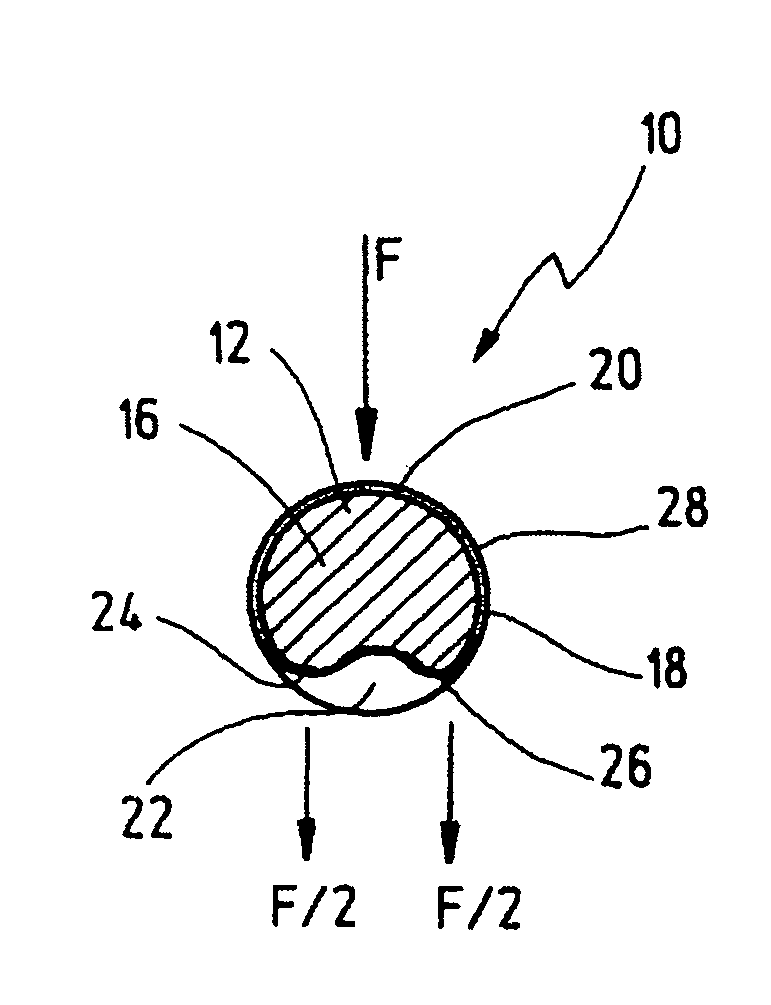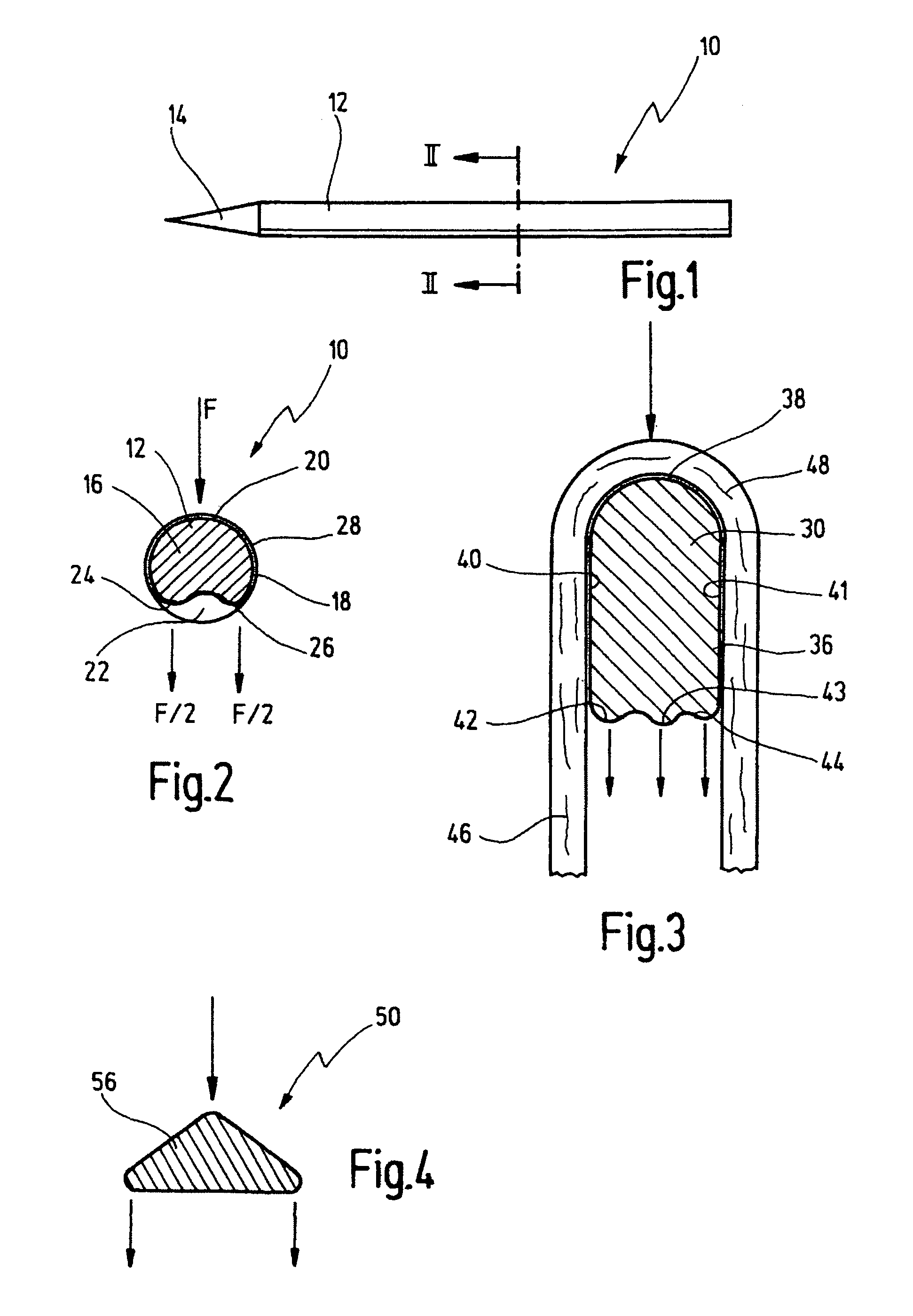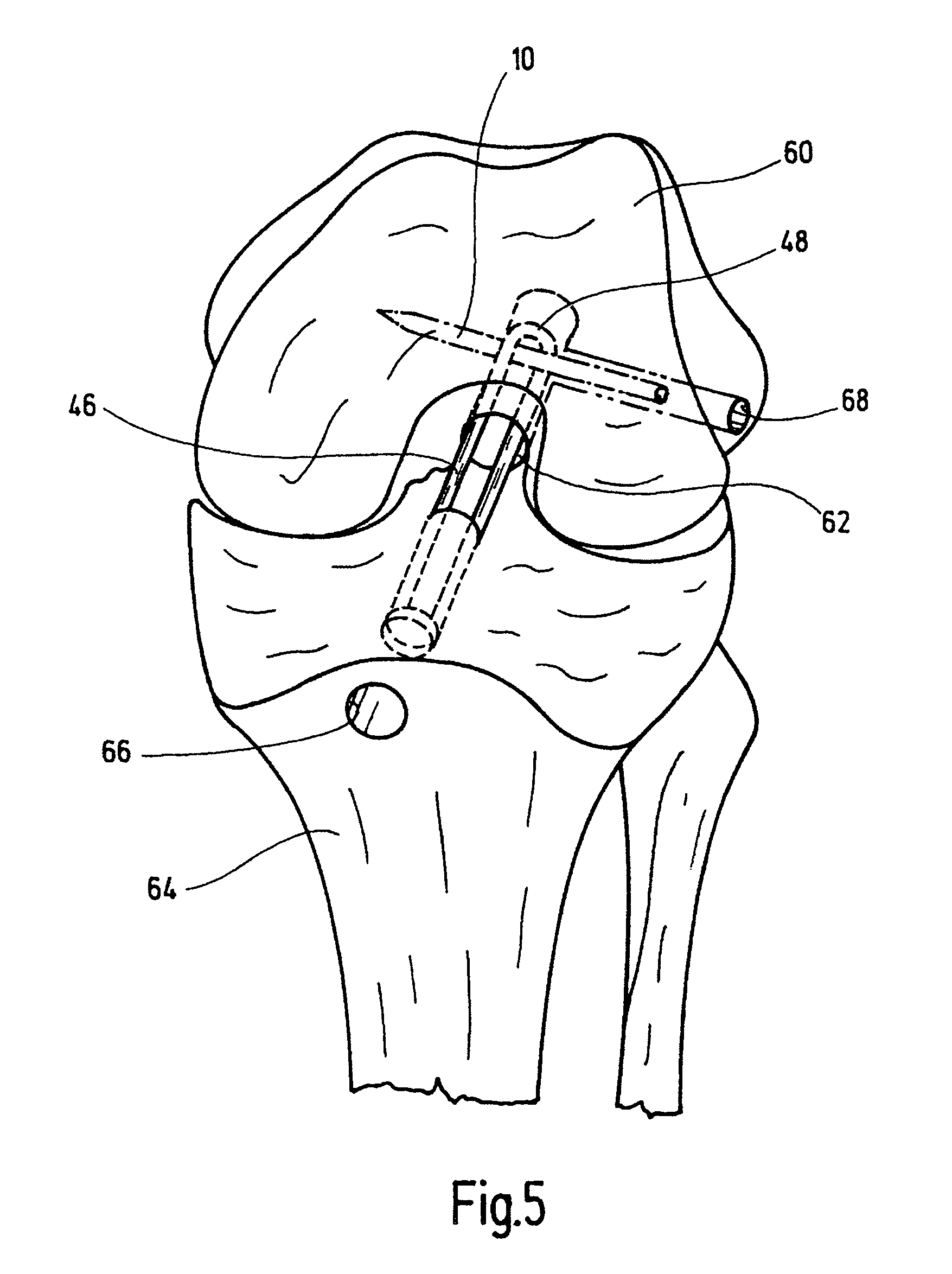Pin for fixing an implant subjected to tensile load
a technology for fixing pins and implants, applied in the direction of prosthesis, surgical staples, ligaments, etc., can solve the problems of cross pin fracture and inability to exclude the possibility of fracturing, and achieve the effect of contributing to the stability against fracturing
- Summary
- Abstract
- Description
- Claims
- Application Information
AI Technical Summary
Benefits of technology
Problems solved by technology
Method used
Image
Examples
Embodiment Construction
[0034]A pin 10 shown in FIGS. 1 and 2 has a rod-shaped body 12 which, at one end, merges into a conically tapering tip 14.
[0035]It will be seen from the view in FIG. 2 that the rod-shaped body 12 has a cross section 16 which has roughly the shape of a kidney 18. The circumferential contour is such that one side 20 is in the shape of an arc of a circle and, on the opposite side 22, two arc-shaped contact sites 24 and 26 are formed.
[0036]Seen in the longitudinal direction of the rod-shaped body 12, this can be expressed in terms of a recess or groove being hollowed out. The cross pin 10 has, for example, a length of 40 mm and a diameter of approximately 4 mm.
[0037]The pin can be made of absorbable materials, from plastic material or from metal, for example titanium or a titanium alloy.
[0038]FIG. 2 shows how the pin 10 is fitted into a bore 28 of circular cross section.
[0039]If a force F now acts on the rod-shaped body 12 at an input side, specifically transverse to the longitudinal ax...
PUM
 Login to View More
Login to View More Abstract
Description
Claims
Application Information
 Login to View More
Login to View More - R&D
- Intellectual Property
- Life Sciences
- Materials
- Tech Scout
- Unparalleled Data Quality
- Higher Quality Content
- 60% Fewer Hallucinations
Browse by: Latest US Patents, China's latest patents, Technical Efficacy Thesaurus, Application Domain, Technology Topic, Popular Technical Reports.
© 2025 PatSnap. All rights reserved.Legal|Privacy policy|Modern Slavery Act Transparency Statement|Sitemap|About US| Contact US: help@patsnap.com



